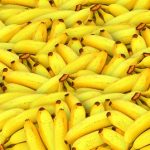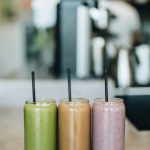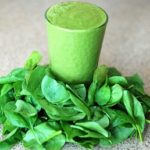Do blenders destroy fiber and turn them from something that is healthy into something that is unhealthy? If you look around online for answers, you’d be surprised at what you find. First, there are quite a lot of misinformation and anecdotal evidence that says yes. But that’s actually not true. The simple answer is that blenders don’t destroy fiber. Whew!
So, now that you know that your smoothie isn’t fiber free and a big old unhealthy sugar bomb, let’s take a look at the myth, some things that you should be aware of, and the basic science (bro science, some might say!) behind the topic of fiber and smoothies.
What Happens To The Fiber When You Blend Fruits and Vegetables?
The first thing to understand is that the fiber doesn’t “disappear” or get “destroyed”. What does that even mean? Where would it go? There are two types of fiber found in fruits and vegetables: insoluble and soluble. The basic difference between these two types of fiber is how they handle liquid or water. The insoluble fiber absorbs liquid, normally while in the intestines during digestion. The other type of fiber doesn’t absorb water. Insoluble fiber has, to put it delicately, benefits to your “stool” aka it makes you have healthy poop. Soluable fiber, on the other hand, is great for your heart. (it’s why people eat oatmeal–which you can add to your blended smoothie).
The fiber doesn’t get destroyed or disepared. What happens is that it gets broken and blended into smaller pieces. There are articles where people say that it’s destroyed, but they don’t say what happens to it! Think of it this way, the fruit or veggies just get chewed up when you eat them. When you chew an apple, your teeth (particularly your molars) masticate them and chew them up. This is one of the reasons why some juicers are called “masticating juicers”. They crush the fiber, they don’t destroy it.
Do Blenders Destroy Fiber?
Again, no. What happens it that blenders blend up the fruit and vegetables. Think of it as pre-processing the food so that it’s easier to digest. You wouldn’t be able to eat a bowl of kale, an apple, and a lemon. But you could certainly put it into a blender and get a great tasting smoothie.
The smoothie will still have lots of fiber, especially if you use a lot of fruit and veggies or even oats. If your smoothie is mostly ice and yogurt, then of course you’re not going to have much fiber.
Breaking Fiber Down does not equal Destroying Fiber
Do Smoothies Cause a “Sugar Rush”?
The one thing you might want to be aware of is that you might get a “sugar rush” from fruit smoothies. It’s because you are getting a lot of fruit all at once. Apple juice, for instance, has lots of sugar. But that doesn’t mean that it’s unhealthy. It just means that you need to be mindful of what you put in a smoothie. So, a fruit smoothie is going to have more sugar than a green smoothie such as kale.
What I suggest people do is not go overboard with the fruit. If you’re adding a cup of berries, then add some oats to that. The oats contain a lot of soluble fiber which helps. Also, add yogurt. If you just do a big blender filled with berries and water or almond milk, then you will get that sugar rush. It’s natural sugar, and it’s healthy, but it does need to be something that you are aware of.
Can You Prevent The Blender From Destroying The Fiber?
Some people might wonder if you can do anything to limit the possibility that the blender will destroy fiber. First, it doesn’t destroy fiber! Second, you could always try and make chunky smoothies, but why? If you’re concerned about the fiber content in your smoothie, you need to add more fruits and veggies, not try and blend it less. Add a teaspoon of oats to each smoothie, and you’ll be well on your way to a healthy fiber full smoothie!
Related Posts

Hi Everyone!
Jenny O’Brien here. Nutritionist & personal trainer. Just your average vegetarian and smoothie fanatic!
If you have any questions, or you’d like me to cover a particular topic, drop me a line and let me know!
Thanks!





